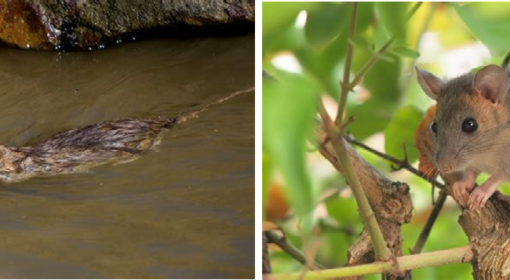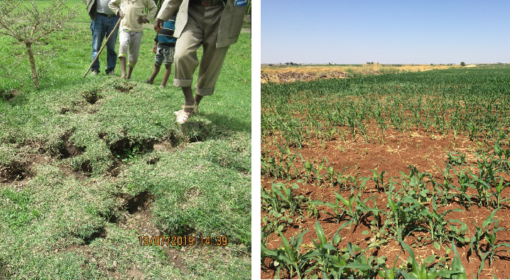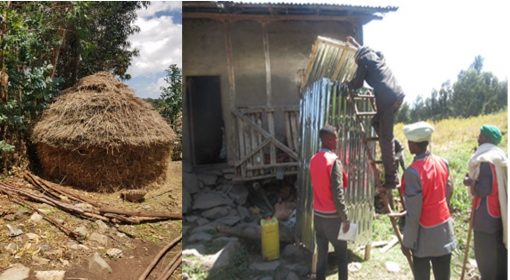By Luwieke Bosma (MetaMeta), Anushree Mitra (MetaMeta), Dikhyani Konwar (PRADAN), Poulomi Mallick (PRADAN), and Saroj Yakami (MetaMeta)
This is the second blog out of two where we will learn about rodent characteristics in four villages in Madhya Pradesh, India. In the previous blog we learned about the rodent species in 4 villages in Madhya Pradesh and how these small mammals damage crops at an average 25%. In this post, we will dive deeper into rodent management options. Seeking to understand the traditional systems and how Ecologically-Based Rodent Management (EBRM) methods could be integrated and by who.
But, before we dive in, let us first sketch a picture of the cultural beliefs and perceptions around rodents and rodent control behaviours. Since an understanding of these is crucial in order to implement management changes to more environmentally friendly practices. Some examples of cultural beliefs and other customs that are important to understand:
- People kill snakes when they see them, they know they kill rats, but they are scared of snake bites. Two people from the village have already died from snake bites, since for instance kraits are poisonous.
- Very few people in Kumharra village sell produce at one time for an income. In most of the cases, farmers sell their produce when in need of money to buy other products. So they store their produce themselves and only sell the products little by little.
- Example of a spiritual/religious tradition: In the Baiga tribe, in the beginning of Kharif season, people do proper praying of “Thakur Dev”. During the praying, there are different types of crops that are grown in the area. At the end of the praying, they distribute seeds/grain to all the community members. During the sowing time, they also sow these seeds/grain in the farmland as a blessing to the land. There is a belief that when they do it well, there is less damage by animals, e.g. rodents, to the crops in the farmland. They believe that if a puja was not done well, they can have more problems with rodents.
 Owls are seen as ghosts, they represent death. There are many beliefs around this, e.g. you should not go out at night, because then if you hear the c
Owls are seen as ghosts, they represent death. There are many beliefs around this, e.g. you should not go out at night, because then if you hear the c- all of an owl, bad spirits will find y
ou. If someone gets scared from the sound of an owl, that person will get a fever. Etc. (photo shows barn owl that caught a rat)
Box 1:
There was a legend shared by an older man. There once was an old person in a house who used a rope to tie a mouse, so it could not eat the stored food. But then his yield started to decrease. So they concluded it is not good to keep mice away from food, i.e. we can’t control mice completely, they also need to eat. Tribal people say, for all animals, everyone has a place in the food chain, we do not wipe out, every species has a right to live, thus every species must be able to get something.
How are rodents currently managed by the communities?
The main control method used is the application of chemical synthetic rodenticides (CSR) (photo shows locally bought CSR). It is applied mainly during October and November: CSR is mixed with rice or tomato, so rats are attracted to eat it. However people indicate that this method is very ineffective and rats are very clever, they quickly learn to avoid the poison. This is a very common drawback of chemical synthetic rodenticides, rats quickly develop a bait-shyness, and on top of that also build up resistance since the poison is applied in small amounts, making them sick, but not killing.
The other methods used are mainly mechanical or cultural, it comprise the following methods:
- Close or clog rat holes with stones in the field. But rats come out from other holes (or they make other holes to escape). It helps occasionally, but rats mostly find a way out.
- Use of catapult for rats that stay under the roof in the house.
- Some people catch rats which are prepared for eating. Not the house rats, since they smell. Each species has its own taste.
 Another indigenous way to catch rats is to smoke them out of the burrow. A fire is started at the ‘main entrance’, the biggest hole is normally picked. Then they blow the smoke into this burrow, while closing off other exits. Then at one remaining exit someone will be there to trap/kill the rodents that come out, since they have nowhere else to go.
Another indigenous way to catch rats is to smoke them out of the burrow. A fire is started at the ‘main entrance’, the biggest hole is normally picked. Then they blow the smoke into this burrow, while closing off other exits. Then at one remaining exit someone will be there to trap/kill the rodents that come out, since they have nowhere else to go.- Usage of a bucket trap, applied at the time when humans go to sleep, as then rats get hungry around 10-11pm. The bucket trap was applied manua
lly.
Now, time to learn more about EBRM, what is it and what determines its success?
With Ecologically Based Rodent Management (EBRM) we propose integrated control mechanisms that greatly improve agricultural production standards in quantity and quality, and improve healthy living conditions. In EBRM, our first step is to ‘prevent’ the surge of rodent populations by managing the local environment in such a way that rodent populations never grow beyond the tolerance levels. This means controlling access to food and water, reducing shelters and preventing migration. This requires hygienic, operational and construction measures. The second step is ‘to control’. In case of infestation, the population is reduced by using natural enemies, mechanical measures and by applying bio-rodenticides.
The three main activities in controlling rodents are:
1. Ensuring the cleanliness of grain storage areas and household compounds and preventing rats from entering these areas and structures.
2. Controlling the environment in the agricultural fields:
- Improving cultivation practices such that there are fewer opportunities for rats to thrive
- Destroying the habitats of rats and ensuring they have no place to hide
- Improving the quality of soil and water conservation structures
3. Taking specific actions to control and kill rats:
- Using plants with repellent or toxic traits
- Promoting natural predators
- Installing trap barrier systems
With these three main activities, there are three essential aspects:
- timing (rodent management is most effective in the lean season when they are fewer), It is advised to initiate frequent campaigns and individual rat control measures at the time when the rats are few, the vegetation cover is low, and the rains are little (pre-season). In crop fields that are under rain-fed conditions, the rat population numbers are lowest in the peak of the dry season, a few weeks before the start of the rainy season (cropping season). Before the rains come, there is not much food or crop/grass cover in the fields. Therefore, rats will not start reproducing and they are weaker. As a rule of thumb, rat control measures should be done at the end of the dry season and at the beginning of the rainy season. In the dry season, you target the weak animals, reduce their numbers, and prevent them from reproducing. At the beginning of the rainy season, you target the rats that have survived, applying different measures as part of land preparation and destroying rat habitats. In addition, one can spread different rat control measures over time. When rats retreat to the homesteads, crop fields, or ridges nearby, for instance during heavy rainfalls, farmers can focus on rat control measures in those specific areas.
- collective approach (rodents can only be controlled if everybody is in; otherwise the clever animals will find a way to escape, survive, and thrive),
- combining methods (as rodents are clever, a combination of control methods is required whereby the focus should be foremost to reduce access to food and shelter before going into direct killing). [1]
What is the scope for integrating EBRM concepts in Madhya Pradesh?
Currently the communities in the four villages of Dhamanpani, Kumharra, Paudi and Dudhera in MP, did not know any effective rodent management method, nor did they get support from any department on how to effectively control rodents. EBRM methods can be a low-cost effective alternative that can be implemented to curb rodent populations. Here we present a short-list of EBRM methods which were deemed feasible based on village level discussions.
1. General cleanliness and garbage disposal
Rats are a major problem in many houses. Rats damage clothes, furniture, electric wires, and paper. Rats eat from the household’s food stores and contaminate them. Therefore, they should always be kept away from the house, homestead, compound, and storage areas. They should not be given any reason to come near; therefore, it is key to ensure that they cannot smell food and cannot get access to a shelter. A first and essential measure to take is keeping clean!
In managing rats in and around houses, the first important requirement is to keep the house and the areas around the house (garden, grain storage areas, fences, hedgerows, etc.) clean. There should be no open left-over food, no open piles of garbage, no open stored product or open storage. These are food sources that attract rats and provide shelter. One should keep food locked away and air-tight so rats cannot smell it. All items that attract rats should be eliminated or stored in closed-off containers/boxes/jars/other. The below pictures showcase some bad and good examples.
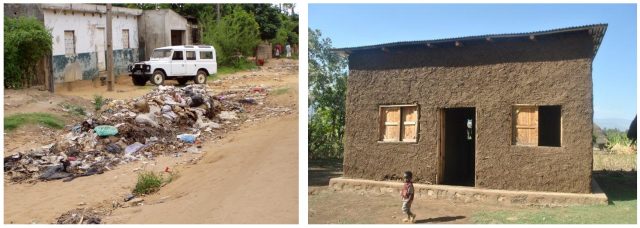
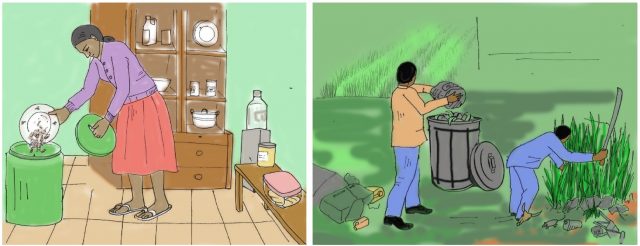
2. Rodent-proofing of storage areas
The second method is to have a rat-proof storage area and storage material for grains and other harvested items. Rats should not be able to get access to stored items.
Placement of outside storage: The storage should not be placed under trees, because then rats can jump in from the top. Also, there should not be bushes, garbage, or watering places around the storage system, because these will attract rats.
Raise storage structure on poles: it is important to make it impossible for rats to get into the storage structure. The best way to do this is to raise the storage structure on poles, for example 0,5m from the ground, and to put iron or metal pins or disks, or barbed wire on the poles on which the storage structure stands. This prevents rats from climbing up, either because the surface is too slippery and rats will slide off, or because the barbed wire is too prickly.
Good materials for your storage structure include wood/bamboo, dung, grass roof, and wood poles to raise the structure.
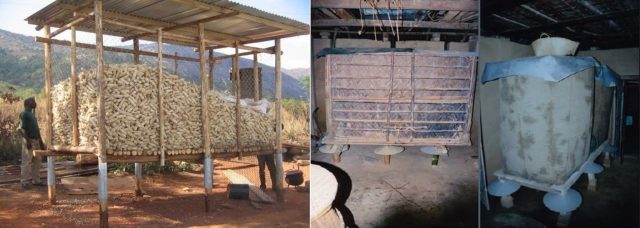
3. Destroying, smoking out or flooding burrows
Destroying rat habitats and shelters denies rats protection from predators, breeding grounds, and temporary safe havens. This results in a decrease in rat survival rates and density, and ensures that rats can only occupy crop fields later in the cropping season.
Some rats make burrows and tunnels to shelter underground, especially those species that are active at night. It is advisable to flood these burrows and tunnels with water first to kill the rats inside just before planting seeds. Another method is to smoke the tunnels.
Deep ploughing can destroy the rat burrows and tunnels. Rats can dig burrows up to 50cm deep. The ploughing depth preferably would reach this depth to destroy a large part of the rat population; however, ploughing at 20cm depth, for example, would also considerably disturb rat burrows.
In other cases, search for rat burrows and destroy these by stabbing/poking in the burrows with a pole or hayfork/prong. This can be done during the tilling and ploughing stages. When you find a rat burrow, you can also set kill-traps in front of the burrow on the runway.
Check regularly for evidence of rodent infestation (burrows, tracks, and runways) to undertake measures.
4. Promoting natural predators
Natural enemies of rats function as highly effective biological control agents. Natural enemies of rats include domestic cats, wild cats, mongoose, genet, owls, other avian predators, jackals, and snakes. This approach involves no killing, no chasing, but protection of habitats of the predator species, and active promotion of wildlife presence.
As a farmer, you should actively promote and try to attract these predators to your fields. For example, installing artificial perches (poles of up to 3 m or more) and nest boxes in the fields helps to attract raptor birds such as owls, buzzards, and falcons. Do this especially in open fields devoid of trees and shrubs. Erect the poles in such fields so that the birds sit on them and hunt down the rat population.
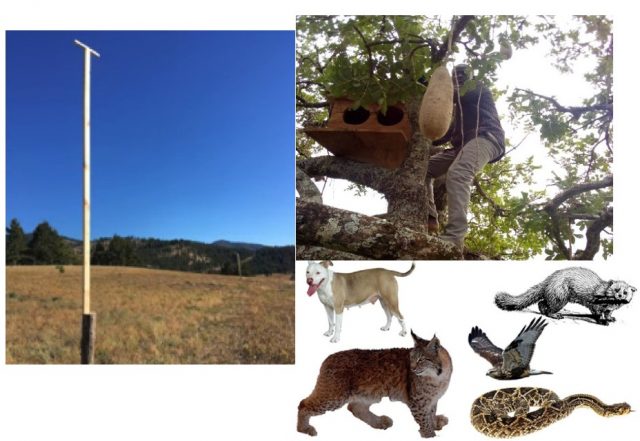
Do you want to know more? Contact Luwieke (lbosma@metameta.nl) or have a look at www.rodentgreen.com

References:
[1] Engdayehu, G., Yonas, M., Tilahun, T., Wondmnow, B., Bosma, L., & van Steenbergen, F. (2020). Effectively Controlling Rats with Ecological Methods – Ethiopia edition 2020. Green Rodent Control.
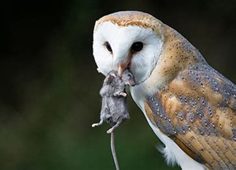 Owls are seen as ghosts, they represent death. There are many beliefs around this, e.g. you should not go out at night, because then if you hear the c
Owls are seen as ghosts, they represent death. There are many beliefs around this, e.g. you should not go out at night, because then if you hear the c